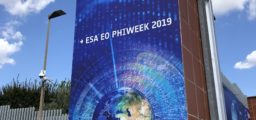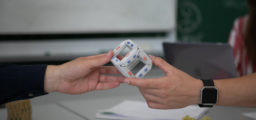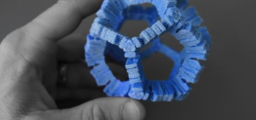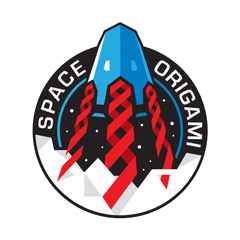Posted by: Kalorintschi
Research on the ISS
The International Space Station offers unique conditions for research in various fields such as medicine, life sciences, materials research, metereology, astronomy, earth observation and flora!
Since the beginning of scientific research on the ISS in 2000, many significant results have been achieved that are important for improving life on Earth and future missions into space.
In this blog post we would like to introduce you to some of these exciting experiments.
The ISS offers a platform for astronomical devices that provides energy supply and position control without the need for an extra satellite. Nevertheless, you can take advantage of the thin atmosphere at this height. For example, the “Solar Monitoring Observatory” (SOLAR) is mounted in the non pressurized area of the ISS on the outside of the modules and investigates the fluctuations in solar radiation that also influence the climate on Earth.
.png)
Microgravity conditions on the Space Station and the increased exposure to radiation on the ISS are particularly interesting for experiments in materials science, biology, biotechnology and human medicine.
You can read about the advantages of microgravity in one of our earlier blog post.
In the field of materials science, for example, the Materials Science Laboratory on the ISS is used to investigate diffusion effects within the melt without being superimposed by convection.
Protein crystallization plays an important role in biology, biotechnology and medical research. Microgravity offers particularly favourable conditions, which is why we also want to exploit these for our crystallization experiment.
Of course, studying the medical conditions of astronauts during and after their time on the ISS is particularly interesting in order to investigate which influences the prevailing conditions have on the human body, especially the reduction of bone density and muscle atrophy. Additionally, these data are also directly used to achieve advances in research on Earth. Alexander Gerst recently presented a fascinating example from Altzheimer research when he was a guest at Markus Lanz’s show. The brain of an Alzheimer patient undergoes processes similar to those of astronauts in space, which could provide new insights into the development of neurodegenerative diseases.
For Earth observation, in addition to the advantage of an existing carrier system, which already has position control, telemetry and all other support functions, there is also the opportunity that astronauts can take pictures without fixed angles in addition to Earth observation satellites. In contrast to other Earth observation satellites, the ISS is not sun-synchronous and therefore allows images to be taken under a wide variety of lighting conditions. Since the ISS was commissioned, more than 600.000 images of the Earth’s land and oceans and atmospheric phenomena have been taken from Earth’s orbit.
The supply of oxygen and food is a great challenge for a permanent presence of humans in space. The greenhouse experiment PLANTS 2 in the Swesda module contained cultivated plants which are observed, cared for and irrigated on the ISS. Important knowledge about growth and development of plants in weightlessness is gained.
.png)
Your Space Origami Crew






Comments are closed.